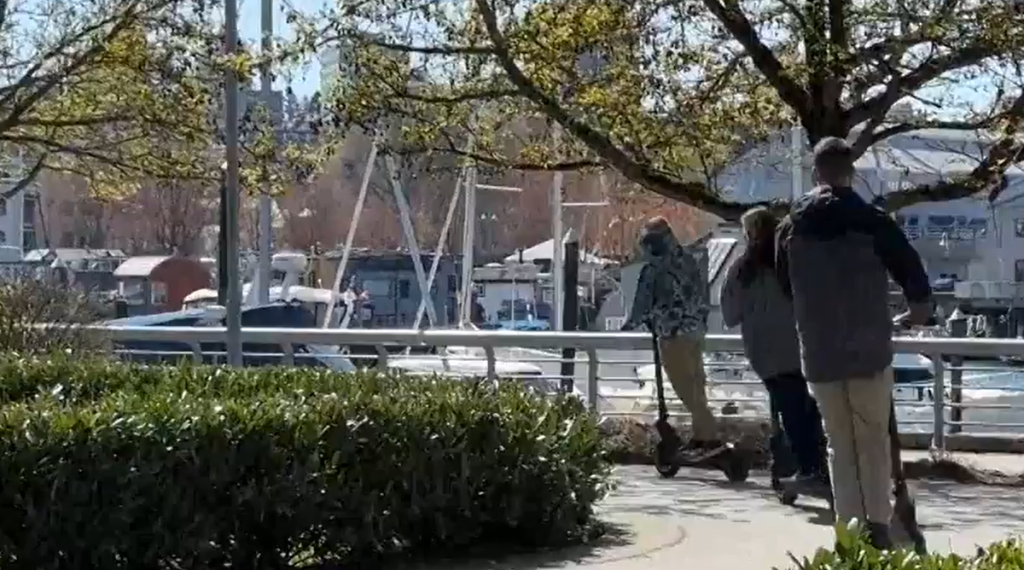Review: “Breath of the Wild” breathes new life into Zelda series
Posted March 7, 2017 11:20 am.
Last Updated March 7, 2017 12:20 pm.
This article is more than 5 years old.
You have the gargantuan one-eyed beast on the ropes, and move in to finish it off with your favourite sword. Only your sword breaks before you can vanquish your foe, and the only other weapon in your arsenal is a torch. You swing it feebly as the beast prepares its counterattack.
If this doesn’t sound like something that would happen in a “Legend of Zelda” game, that’s because “Breath of the Wild” is so unlike anything that’s come before in Nintendo’s decades-old franchise.
The new Zelda title, available now for the Wii U and Nintendo Switch, breaks many conventions in a series that built itself on a tried and true formula. “Breath of the Wild” is the first truly open-world Zelda game, and the first to break away from the series’ formula of going into a dungeon to get a weapon or tool to help you reach the next dungeon.
The pacing is at times slow, the world is huge and not a little daunting, and progression comes through careful planning rather than handholding. These are risks taken by Nintendo that pay off in a captivating “Zelda” game that revitalizes a series that hadn’t seen an original console title since 2011.
The concept of the game is familiar to “Zelda” veterans. You take control of the legendary hero Link as he toils to save the land of Hyrule from the clutches of the evil Ganon (called Calamity Ganon, somewhat redundantly, in this game). Ganon has been sealed in Hyrule Castle by Princess Zelda 100 years after his attacks devastated much of the land, but his power has been growing and he once again threatens the world.
“Breath of the Wild” begins as Link awakens from a century-long slumber in a cave. After a brief tutorial, you are left to your own devices to figure out how to proceed. For those who have played a lot of “Zelda” games, this amount of freedom takes some getting used to.
Unlike previous titles, Link gets most of his special abilities at the beginning of the game and then is left to explore the vast land of Hyrule. But while you can pretty much go anywhere and climb anything, there are still soft barriers to your progress.
“Breath of the Wild” punishes unprepared players, as you find out the first time you ascend a mountain only to find the very air is cold enough to hurt you. You need to figure out the gear or elixirs you need to survive at extreme temperatures.
Coming unprepared to combat is also a recipe for a quick defeat. Link can carry a number of melee weapons, shields and bows at one time. But weapons are fragile and can break after extended use. If you haven’t stocked up properly and a weapon breaks at an in opportune time during a difficult fight, be ready to make a hasty retreat.
Link also has a limited amount of stamina, so you won’t be climbing huge cliffs or towers right off the bat. Stamina can be replenished by certain kinds of food, and Link’s maximum stamina can be increased by acquiring spirit orbs found in shrines dotted around the countryside.
Stamina is expended by doing anything taxing, such as sprinting, swimming or using your hang glider to get around. As a result, some parts of Hyrule are inaccessible unless you stock up on the right food or spend time hunting for shrines.
The shrines are like mini-dungeons, but puzzle-based rather than combat-focused. Link will use his special abilities — for example, Magnesis moves metal objects around, Stasis briefly freezes an object in time — to solve a puzzle and get a spirit orb.
Most of the shrine puzzles are fun to solve, but a select few that rely too much on fiddly mechanics can sap a bit of enjoyment out of the game.
Larger dungeons come in the form of four Divine Beasts, four huge constructs that have been corrupted by the power of Ganon. Link will have to solve a number of puzzles and defeat a tough boss monster to regain control of the beasts and use them in the fight against Ganon.
The Divine Beasts are found in the four corners of Hyrule, giving Link plenty of opportunity to explore the world on the way. The world isn’t as full of adventures to stumble upon as games like “Skyrim” or “Fallout 4,” but the attention to detail is impressive.
A sudden rainfall makes slippery rocks difficult to climb, but masks the sound of your footsteps as you sneak up on an unsuspecting foe. Carrying a metal sword during a thunderstorm is an invitation to be struck down by a bolt of lightning, but a switch to a wooden weapon solves the problem. That same wooden weapon will burst into flames in your hands if you brandish it in Hyrule’s volcanic mountainous region.
“Breath of the Wild” is still a familiar “Zelda” title in many ways. The esthetics and sounds — the classic chime when a secret door or treasure is found is still here — and the core story don’t deviate too much from past titles. The real innovation comes in the way the game is presented. It puts you in a huge playground and lets you get lost, fail and figure things out for yourself.
The “Zelda” formula that worked for decades didn’t really need an overhaul; a few tweaks to what worked seemed to keep the series going just fine. But it’s the abandonment of the standard structure that makes “Breath of the Wild” the series’ crowning achievement rather than just another good “Zelda” game.
“Breath of the Wild” is rated E and retails for around $80.










